Auswahl der besten Wechselrichtergröße für eine 200-Ah-Lithiumbatterie
Bei der Einrichtung eines netzunabhängigen, Solar-, Wohnmobil- oder Notstromsystems ist die Wahl der optimalen Wechselrichtergröße für Ihre 200-Ah-Lithiumbatterie eine der wichtigsten Entscheidungen. Die Wahl des richtigen Wechselrichters gewährleistet optimale Stromversorgung, Systemsicherheit und langfristige Batterielebensdauer. Dieser Leitfaden führt Sie durch alles, was Sie über die Kombination Ihrer 200-Ah-Lithiumbatterie mit einem Wechselrichter der passenden Größe wissen müssen.
- Die Grundlagen einer 200-Ah-Lithiumbatterie verstehen
- Warum die Wahl des richtigen Wechselrichters für eine 200-Ah-Lithiumbatterie wichtig ist
- Wichtige Spezifikationen einer 200-Ah-Lithiumbatterie
- So berechnen Sie die Wechselrichtergröße für eine 200-Ah-Lithiumbatterie
- Empfehlungen zur Wechselrichtergröße basierend auf der Spannung für eine 200-Ah-Lithiumbatterie
- Reine Sinuswelle vs. modifizierte Sinuswelle Wechselrichter für eine 200 Ah Lithiumbatterie
- Laufzeitberechnungen mit einer 200-Ah-Lithiumbatterie und einem Wechselrichter
- Überlegungen zum Batteriemanagementsystem (BMS) für die Wechselrichterkopplung mit 200 Ah Lithiumbatterien
- Installationstipps für ein 200-Ah-Lithiumbatterie- und Wechselrichtersystem
- Kombination von Solarladung mit einer 200-Ah-Lithiumbatterie und einem Wechselrichter
- Häufig gestellte Fragen zur Dimensionierung von Wechselrichtern mit 200 Ah Lithiumbatterien
- Sicherheitstipps zur Verwendung einer 200-Ah-Lithiumbatterie mit einem Wechselrichter
- Abschließende Überlegungen zur Auswahl der besten Wechselrichtergröße für eine 200-Ah-Lithiumbatterie
Die Grundlagen einer 200-Ah-Lithiumbatterie verstehen
Was ist eine 200-Ah-Lithiumbatterie?
Eine 200-Ah-Lithiumbatterie ist ein wiederaufladbarer Energiespeicher mit hoher Kapazität. Die Angabe „200 Ah“ steht für Amperestunden und gibt an, wie viele Ampere die Batterie pro Stunde liefern kann. Wenn Sie beispielsweise 10 Ampere aus der Batterie entnehmen, sollte sie etwa 20 Stunden halten. Bei 12 Volt entspricht dies einer Energiekapazität von 2.400 Wattstunden (Wh).
Leistung von Lithium- vs. Blei-Säure-Batterien
Im Gegensatz zu Blei-Säure-Batterien können Lithium-Batterien bis zu 80–90 % ihrer Gesamtkapazität entladen werden, ohne dass die Leistung nachlässt. Eine 200-Ah-Lithium-Batterie liefert bis zu 1.800–2.000 nutzbare Wattstunden, verglichen mit etwa 1.200 Wh bei einer Blei-Säure-Batterie gleicher Leistung.
Warum die Wahl des richtigen Wechselrichters für eine 200-Ah-Lithiumbatterie wichtig ist
Vermeidung von Systemungleichgewichten
Die Verwendung eines zu großen oder zu kleinen Wechselrichters für Ihre 200-Ah-Lithiumbatterie kann zu Ineffizienz, Überhitzung, Systemabschaltungen oder Batterieschäden führen. Stellen Sie sicher, dass die Wattzahl Ihres Wechselrichters der Leistung Ihrer Batterie entspricht. So schützen Sie Ihre Geräte und verlängern die Lebensdauer der Batterie.
Sicherstellung der Lastkompatibilität
Passen Sie die Ausgangsleistung des Wechselrichters an Ihre typische Gerätelast an. Wenn Ihr System empfindliche Elektronik wie Laptops, Kühlschränke oder medizinische Geräte mit Strom versorgt, kann der falsche Wechselrichter zu Leistungsproblemen oder Fehlfunktionen führen.
>>Siehe auch: Die 60-V-20-Ah-Lithiumbatterie verstehen – Ein umfassender Leitfaden
Wichtige Spezifikationen einer 200-Ah-Lithiumbatterie
Nennspannungsoptionen
200-Ah-Lithiumbatterien sind in den Formaten 12 V, 24 V und 48 V erhältlich. So gliedert sich die Energiekapazität:
12 V × 200 Ah = 2.400 Wh
24 V × 200 Ah = 4.800 Wh
48 V × 200 Ah = 9.600 Wh
Entladerate (C-Bewertung)
Lithiumbatterien haben typischerweise eine höhere Dauer- und Spitzenentladeleistung als Blei-Säure-Batterien. Eine hochwertige 200-Ah-Lithiumbatterie kann eine Entladerate von 1C oder 200 Ampere sicher bewältigen. Bei einem 12-V-System entspricht dies einer Dauerleistung von 2.400 Watt.
So berechnen Sie die Wechselrichtergröße für eine 200-Ah-Lithiumbatterie
Schritt 1: Schätzen Sie die Belastung Ihrer Geräte
Listen Sie die Geräte auf, die Sie mit Strom versorgen möchten, und deren Wattzahl:
LED-Leuchten: 100 W
Laptop: 100 W
Kühlschrank: 200 W
Mikrowelle: 1.200 W
Gesamtlast = 1.600 W
Schritt 2: Fügen Sie einen Sicherheitsspielraum hinzu
Die Effizienz des Wechselrichters und unerwartete Spannungsspitzen erfordern einen Puffer. Multiplizieren Sie die Gesamtwattzahl mit 1,25:
1.600 W × 1,25 = 2.000 W
Daher wird mindestens ein Wechselrichter mit 2.000 W empfohlen.
Schritt 3: Überspannungsschutz bestätigen
Prüfen Sie, ob Geräte (wie Kühlschränke oder Pumpen) einen Anlaufstrom benötigen. Wählen Sie einen Wechselrichter, der mindestens das 1,5-fache der Dauerlast als Spitzenleistung unterstützt.
Empfehlungen zur Wechselrichtergröße basierend auf der Spannung für eine 200-Ah-Lithiumbatterie
12V 200Ah Lithiumbatterie
Nutzbare Energie: ~2.400 Wh
Maximale sichere Leistungsaufnahme: ~2.000 W
Empfohlener Wechselrichter : Reine Sinuswelle, 1.500 W – 2.000 W, 12 V Eingang
24V 200Ah Lithiumbatterie
Nutzbare Energie: ~4.800 Wh
Maximale sichere Leistungsaufnahme: ~4.000 W
Empfohlener Wechselrichter : Reine Sinuswelle, 3.000 W – 4.000 W, 24 V Eingang
48V 200Ah Lithiumbatterie
Nutzbare Energie: ~9.600 Wh
Maximale sichere Leistungsaufnahme: ~7.000 W
Empfohlener Wechselrichter : Reine Sinuswelle, 5.000 W – 8.000 W, 48 V Eingang
Reine Sinuswelle vs. modifizierte Sinuswelle Wechselrichter für eine 200 Ah Lithiumbatterie
Was ist ein reiner Sinus-Wechselrichter?
Wechselrichter mit reiner Sinuswelle erzeugen sauberen Wechselstrom und sind ideal für empfindliche Elektronik. Wechselrichter mit modifizierter Sinuswelle sind günstiger, können aber bei manchen Geräten Störungen oder Schäden verursachen.
Empfehlung für Lithiumbatterien
Wählen Sie für Ihre 200-Ah-Lithiumbatterie immer einen Wechselrichter mit reiner Sinuswelle, um die Gerätekompatibilität und Systemzuverlässigkeit sicherzustellen.
Laufzeitberechnungen mit einer 200-Ah-Lithiumbatterie und einem Wechselrichter
Beispiellaufzeiten bei 12 V (90 % nutzbare Kapazität)
|
Belastung (Watt) |
Laufzeit (ca.) |
|
100 W |
21,6 Stunden |
|
500 W |
4,3 Stunden |
|
1000 W |
2,16 Stunden |
|
1500 W |
1,44 Stunden |
Multiplizieren Sie diese Zahlen für 24-V- oder 48-V-Systeme, da diese insgesamt mehr Energie enthalten.
Überlegungen zum Batteriemanagementsystem (BMS) für die Wechselrichterkopplung mit 200 Ah Lithiumbatterien
Warum die BMS-Integration wichtig ist
Das BMS in Ihrer 200-Ah-Lithiumbatterie überwacht Spannung, Stromstärke und Temperatur und verhindert Überladung oder Tiefentladung. Wählen Sie einen Wechselrichter, der mit dem BMS kommuniziert oder zumindest dessen Spannungsabschaltpunkte einhält.
Installationstipps für ein 200-Ah-Lithiumbatterie- und Wechselrichtersystem
Verwenden Sie Kabel mit geeigneter Größe
Die Stromaufnahme erhöht den Widerstand und die Wärmeentwicklung in zu kleinen Kabeln. Verwenden Sie kurze, dicke Kabel und minimieren Sie die Verbindungspunkte.
Schließen Sie geeignete Sicherungen und Leistungsschalter ein
Fügen Sie zum Brand- und Überlastungsschutz eine Sicherung oder einen Leistungsschalter hinzu, der etwas über der maximalen Stromaufnahme Ihres Wechselrichters liegt.
Belüftung und Wärmeableitung
Installieren Sie den Wechselrichter an einem kühlen, trockenen und belüfteten Ort, um eine Überhitzung bei Spitzenlast zu vermeiden.
Kombination von Solarladung mit einer 200-Ah-Lithiumbatterie und einem Wechselrichter
Dimensionierung von Solarmodulen
Für eine 200-Ah-Lithiumbatterie mit 12 V (2.400 Wh) sollten Sie mindestens 500–600 W Solarmodule mit einem MPPT-Laderegler anstreben.
Wechselrichter-Ladegerät-Hybridsysteme
Viele Hybrid-Wechselrichter können Ihre Batterie mit Solarenergie laden und in einem Gerät Gleichstrom in Wechselstrom umwandeln. Überprüfen Sie die Kompatibilität mit der Chemie von Lithiumbatterien.
>>Siehe auch: Was Sie über Gleichstrombatterien wissen sollten
Häufig gestellte Fragen zur Dimensionierung von Wechselrichtern mit 200 Ah Lithiumbatterien
Kann ich einen 3.000-W-Wechselrichter mit einer 200-Ah-Lithiumbatterie verwenden?
Ja, wenn Sie eine 24-V- oder 48-V-Batterie verwenden. Ein 3.000-W-Wechselrichter in einem 12-V-System zieht 250 A, was die sichere Entladerate vieler Lithiumbatterien überschreiten kann.
Wie lange kann eine 200-Ah-Lithiumbatterie eine Last von 1500 W versorgen?
Bei 90 % nutzbarer Kapazität (2.160 Wh) und 1.500 W Last:
Laufzeit ≈ 2.160 Wh ÷ 1.500 W = 1,44 Stunden
Welche Wechselrichtermarke ist die beste für Lithiumbatterien?
Zu den am besten bewerteten Marken gehören:
Victron Energy
Renogy
AIMS Power
Viel Power!
Growatt
Sicherheitstipps zur Verwendung einer 200-Ah-Lithiumbatterie mit einem Wechselrichter
Überlastungen vermeiden
Schließen Sie keinen Wechselrichter an, dessen Nennleistung über der Dauerentladeleistung der Batterie liegt, es sei denn, Sie verwenden mehrere Batterien parallel oder eine höhere Spannung.
Überwachen Sie den Batteriezustand
Installieren Sie einen Batteriemonitor (wie Victron BMV-712 oder den Batteriemonitor von Renogy), um Strom, Spannung und verbleibende Kapazität zu überwachen.
Bei geeigneten Temperaturen lagern und betreiben
Halten Sie sowohl den Wechselrichter als auch die 200-Ah-Lithiumbatterie innerhalb der vom Hersteller empfohlenen Temperaturbereiche (normalerweise 0–45 °C zum Laden).
Abschließende Überlegungen zur Auswahl der besten Wechselrichtergröße für eine 200-Ah-Lithiumbatterie
Um die Leistung, Sicherheit und Langlebigkeit Ihres Energiesystems zu maximieren, ist es wichtig, Ihren Wechselrichter auf Ihre 200-Ah-Lithiumbatterie abzustimmen. Der richtige Wechselrichter sorgt für eine effiziente Stromversorgung Ihrer Geräte, schützt Ihre Batterie vor Tiefentladung oder Überhitzung und ermöglicht einen reibungslosen Betrieb in netzunabhängigen oder Backup-Szenarien.
Als Faustregel gilt:
12 V 200 Ah Lithiumbatterie : Bis zu 2.000 W Wechselrichter
24 V 200 Ah Lithiumbatterie : Bis zu 4.000 W Wechselrichter
48 V 200 Ah Lithiumbatterie : Bis zu 8.000 W Wechselrichter
Die Wahl eines reinen Sinus-Wechselrichters und die Installation mit der richtigen Verkabelung, den richtigen Leistungsschaltern und der richtigen Belüftung gewährleisten optimale Leistung und Systemlebensdauer. Ob für Ihr Wohnmobil, Ihre Hütte oder Ihr Backup-System zu Hause – die perfekte Wechselrichterkombination hilft Ihnen, das volle Potenzial Ihrer 200-Ah-Lithiumbatterie auszuschöpfen.

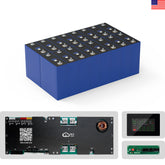

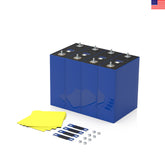

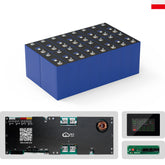

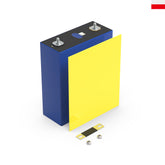

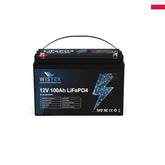
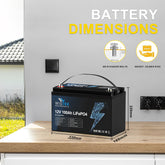
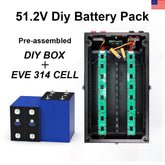

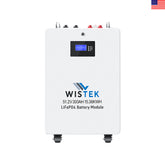
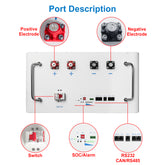
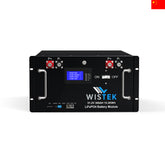
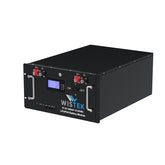


Leave a comment
All blog comments are checked prior to publishing